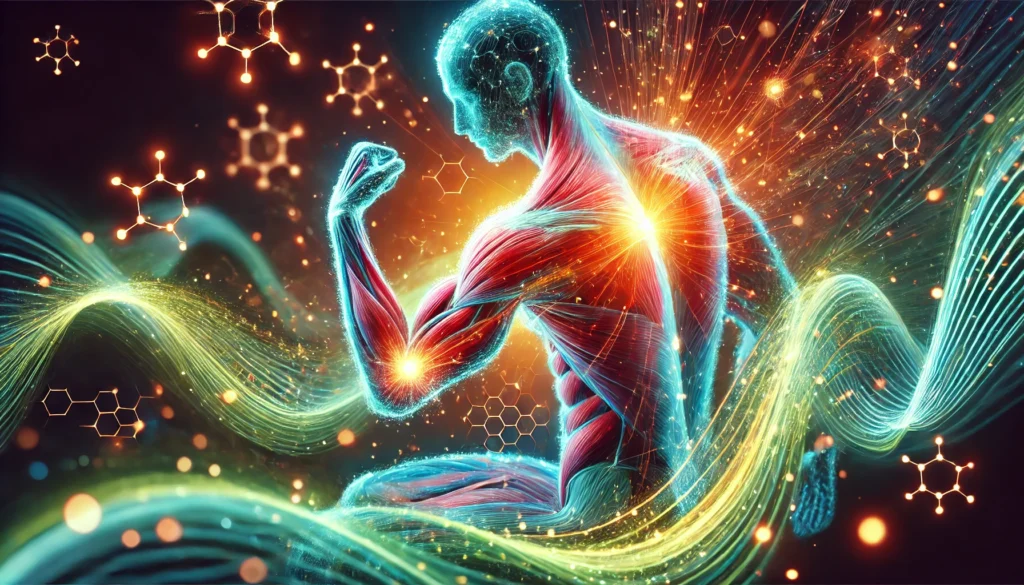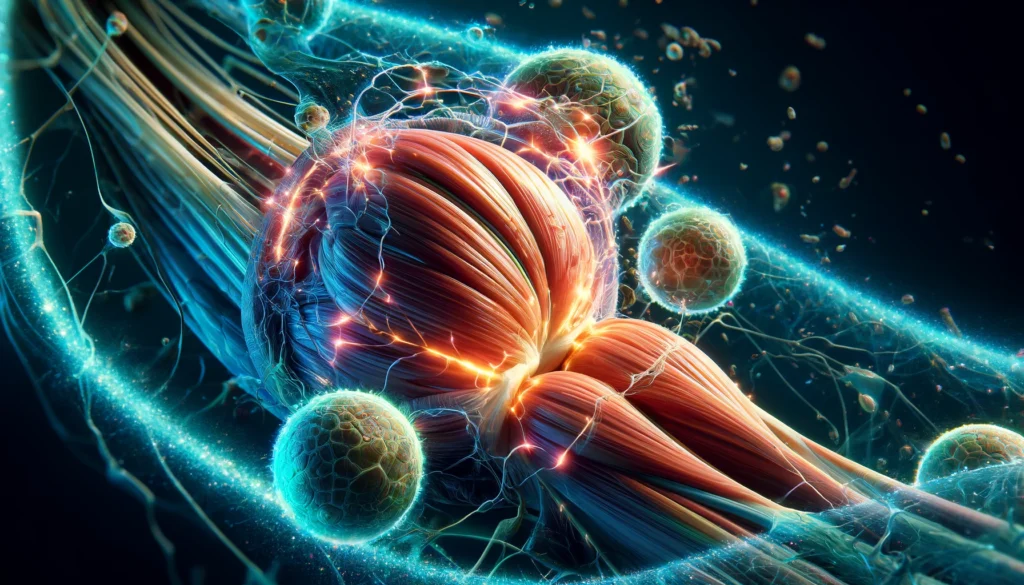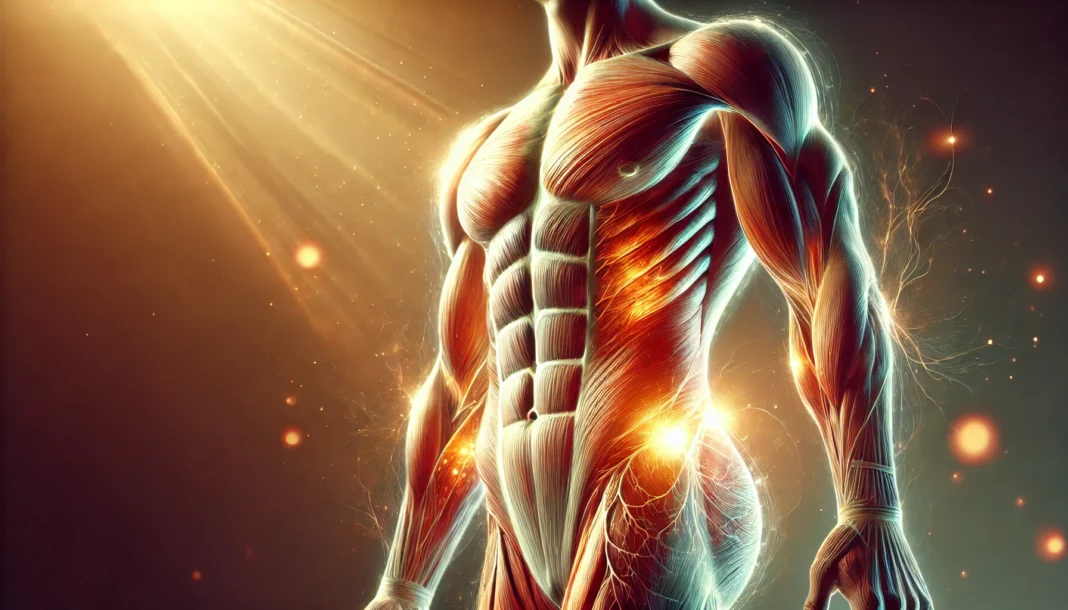Understanding Muscle Healing: The Science Behind Recovery
The human body is an extraordinary machine, designed to withstand stress, repair itself, and adapt to greater challenges over time. When muscles sustain damage, whether from intense exercise, strain, or injury, they undergo a complex recovery process that is influenced by numerous physiological factors. Many athletes and fitness enthusiasts often wonder, how long does it take for muscles to heal? The answer varies depending on the extent of the damage, individual health conditions, nutrition, and recovery practices.
Muscle healing follows a structured biological process that involves inflammation, repair, and remodeling. This intricate mechanism ensures that damaged muscle fibers not only recover but also grow stronger in response to strain. The inflammatory response, triggered immediately after muscle damage, facilitates healing by increasing blood flow and delivering essential nutrients to the affected tissues. The repair phase then focuses on cellular regeneration, while the remodeling phase ensures structural integrity and functional recovery. Each of these phases must be supported with proper rest, nutrition, and targeted interventions to optimize healing time and efficiency.

Factors That Influence Muscle Recovery Time
Muscle recovery time is not a one-size-fits-all process. While minor muscle fatigue from exercise may resolve within 24 to 48 hours, more significant damage, such as a torn muscle, requires a longer healing period. Several factors play a critical role in determining the rate at which muscles recover.
Severity of Muscle Damage
The extent of muscle injury is the primary determinant of recovery time. Microtears from regular workouts heal quickly, typically within a couple of days. However, a severe injury, such as a partial or complete muscle tear, significantly extends the healing timeline. Torn muscle healing time can range from a few weeks to several months, depending on the severity and appropriate rehabilitation efforts.
Age and Fitness Level
Age plays a crucial role in muscle recovery efficiency. Younger individuals tend to heal faster due to higher cellular regeneration rates and superior metabolic function. Conversely, aging slows down recovery due to reduced collagen production and decreased circulation. Fitness level also contributes; well-conditioned athletes may experience faster muscle repair compared to sedentary individuals due to their bodies being adapted to handling physical stress.
Nutrition and Hydration
Proper nutrition accelerates the healing process by providing essential nutrients such as protein, amino acids, vitamins, and minerals. Protein intake is crucial for muscle repair, as it supplies the building blocks needed for cellular regeneration. Additionally, hydration plays a vital role in muscle function, as water supports circulation and facilitates nutrient transport. Without adequate hydration, the healing process may be sluggish and inefficient.
Sleep and Rest
Rest is fundamental for muscle recovery. The body undergoes the majority of tissue repair during deep sleep stages, where growth hormone production peaks. Inadequate sleep can prolong muscle damage recovery time by limiting the body’s ability to restore itself. Furthermore, excessive physical exertion without adequate recovery can lead to overtraining syndrome, which exacerbates muscle fatigue and increases injury risk.
Recovery Techniques and Therapies
Advanced recovery techniques, including massage therapy, cryotherapy, heat therapy, and active recovery, significantly impact healing time. Foam rolling and stretching promote blood circulation and reduce muscle stiffness. Cryotherapy and ice baths help manage inflammation, while heat therapy enhances flexibility and relaxes muscles. Active recovery methods, such as low-intensity exercises, aid in maintaining mobility and facilitating efficient healing.

The Phases of Muscle Healing
Understanding the stages of muscle healing provides insight into why rest and proper care are necessary. The healing process unfolds in three distinct phases, each essential for complete recovery.
Inflammatory Phase
This initial phase occurs immediately after muscle damage and lasts for about 48 to 72 hours. During this period, the immune system responds by increasing blood flow to the affected area, delivering white blood cells and nutrients that help remove cellular debris. The inflammation may cause swelling, pain, and stiffness, which signals the body’s need for rest.
Repair and Regeneration Phase
Following inflammation, the body shifts to the repair phase, where muscle cells called satellite cells become activated. These cells work to regenerate damaged muscle fibers, bridging gaps in tissue and reinforcing the structural integrity of the muscle. This phase can last anywhere from a few days to several weeks, depending on the severity of the injury and the body’s ability to recover.
Remodeling and Strengthening Phase
The final stage of healing focuses on strengthening the newly formed muscle fibers and restoring normal function. The repaired muscle undergoes restructuring to optimize its strength, flexibility, and endurance. This process ensures that the muscle is resilient enough to withstand future physical stress. How long does a muscle need to recover before resuming intense exercise varies based on individual healing rates, but patience and progressive loading are key to preventing re-injury.
How Long Does It Take for Muscle to Rebuild After Injury?
For those wondering how long does it take for muscle to rebuild after an injury, the answer depends on multiple factors, including the degree of damage and recovery methods employed. In cases of mild muscle strain, rebuilding can begin within a few days. However, significant muscle tears can take weeks to months for complete regeneration. The incorporation of resistance training and proper rehabilitation exercises is crucial to restoring muscle strength and function without risking further damage.

Optimizing Muscle Recovery Through Lifestyle and Training Adjustments
Enhancing recovery requires a strategic approach that balances rest, nutrition, and training. Prioritizing rest days, incorporating cross-training activities, and listening to the body’s signals prevent overexertion. Additionally, dietary modifications, such as increasing omega-3 fatty acids and collagen intake, provide the necessary nutrients for efficient muscle repair.
Athletes should also integrate structured rehabilitation programs following injuries to prevent chronic issues. Gradual progression in training intensity allows muscles to adapt without unnecessary strain. This mindful approach minimizes setbacks and ensures long-term athletic performance and resilience.
Frequently Asked Questions (FAQ)
What are some psychological strategies for improving muscle recovery?
Psychological resilience plays a critical role in muscle damage recovery time. Research suggests that stress management and mental visualization techniques can accelerate healing. Stress increases cortisol levels, which can prolong torn muscle healing time by impairing protein synthesis. Meditation, deep breathing, and guided imagery can help regulate stress hormones, optimizing the muscle damage recovery time. Additionally, using positive affirmations and mental rehearsal—where athletes visualize themselves recovering—can enhance motivation and adherence to rehabilitation protocols, potentially reducing how long does it take for muscles to heal.
How does sleep quality impact muscle repair and rebuilding?
High-quality sleep is one of the most underrated yet essential factors in determining how long does a muscle need to recover. During deep sleep, the body releases human growth hormone (HGH), which is crucial for tissue regeneration. Sleep deprivation impairs HGH production and increases inflammation, which can extend muscle damage recovery time. Research indicates that individuals who get fewer than six hours of sleep per night experience slower protein synthesis, which directly affects how long does it take for muscle to rebuild. Prioritizing a consistent sleep schedule, optimizing sleep hygiene, and reducing blue light exposure before bed can improve muscle recovery outcomes.
What financial investments can accelerate muscle recovery?
Recovering from a torn muscle healing time can be expensive, especially for those relying on advanced therapies. Investing in professional physical therapy, cryotherapy, and compression therapy can significantly shorten how long does it take for muscles to heal. Additionally, high-quality nutritional supplements like collagen peptides, omega-3 fatty acids, and branched-chain amino acids (BCAAs) contribute to better muscle damage recovery time. Many athletes also turn to hyperbaric oxygen therapy (HBOT), which is a costly but effective method to accelerate how long does it take for muscle to rebuild by increasing oxygen availability to damaged tissues.
Are there emerging technologies that enhance muscle healing?
Yes, several emerging technologies are revolutionizing torn muscle healing time. Wearable recovery devices that monitor inflammation and blood circulation can provide real-time feedback on muscle damage recovery time. Additionally, regenerative medicine, including platelet-rich plasma (PRP) injections and stem cell therapy, is gaining traction as a way to drastically reduce how long does it take for muscles to heal. Electric muscle stimulation (EMS) devices are also being used to prevent atrophy and facilitate how long does it take for muscle to rebuild, especially in post-injury rehabilitation programs.
How does long-term budgeting influence recovery strategies?
Effective financial planning can determine access to high-quality recovery treatments, directly affecting how long does a muscle need to recover. Those who incorporate recovery expenses into their long-term budget can afford premium therapies such as infrared sauna sessions, deep-tissue massages, and cutting-edge rehabilitation programs. Without financial preparedness, individuals may rely solely on basic recovery methods, potentially extending their torn muscle healing time. Investing in health insurance policies that cover sports injuries can also provide financial relief, ensuring optimal muscle damage recovery time without the burden of unexpected medical costs.
How do professional athletes manage their muscle recovery differently?
Elite athletes follow advanced recovery protocols that significantly reduce how long does it take for muscle to rebuild. They often undergo cryotherapy sessions, consume customized nutrition plans, and work closely with sports scientists to optimize their muscle damage recovery time. Many professionals also use wearable biometric technology to track muscle fatigue and adjust their training loads accordingly. Unlike casual gym-goers, athletes have access to cutting-edge regenerative treatments, reducing their torn muscle healing time compared to the average person. Their recovery strategies prioritize efficiency, ensuring that how long does a muscle need to recover is minimized through precise interventions.
What are the long-term consequences of ignoring proper muscle recovery?
Neglecting proper recovery can lead to chronic issues that extend how long does it take for muscles to heal. Over time, repeated strain without adequate rest increases the risk of developing conditions like tendinitis, fibrosis, and myofascial pain syndrome. Poor recovery habits also slow down how long does it take for muscle to rebuild, leading to decreased muscle mass and strength over time. Furthermore, inadequate recovery can contribute to metabolic imbalances, making future injuries more severe and prolonging muscle damage recovery time. Consistently ignoring rest and nutrition leads to cumulative damage, making the body more susceptible to long-term dysfunction.
How does age affect muscle healing and rebuilding?
Aging naturally slows down how long does it take for muscle to rebuild due to decreased collagen production and lower protein synthesis rates. Older individuals often experience longer muscle damage recovery time because their bodies have reduced regenerative capacities. However, targeted strength training and proper nutrition can mitigate age-related delays in how long does a muscle need to recover. Consuming higher protein intake, staying hydrated, and incorporating mobility exercises can help improve torn muscle healing time. Additionally, hormone replacement therapy (HRT) is sometimes used to enhance muscle repair in aging populations.
Can dietary adjustments shorten muscle recovery time?
Absolutely. A well-balanced diet rich in essential amino acids, antioxidants, and micronutrients can significantly impact how long does a muscle need to recover. Foods high in leucine, such as eggs, chicken, and dairy products, are particularly beneficial for reducing muscle damage recovery time. Additionally, consuming anti-inflammatory foods like turmeric, ginger, and fatty fish can speed up torn muscle healing time by reducing oxidative stress. Staying hydrated and maintaining a consistent protein intake throughout the day ensures efficient tissue repair, directly influencing how long does it take for muscle to rebuild.
What are the future trends in muscle recovery research?
The future of muscle damage recovery time research is centered around bioengineering and gene therapy. Scientists are exploring ways to manipulate genetic expression to accelerate how long does it take for muscles to heal. Bioprinting of muscle tissues using stem cells could drastically reduce torn muscle healing time, offering revolutionary treatments for severe injuries. Moreover, AI-driven rehabilitation programs are being developed to provide customized recovery protocols based on an individual’s biometrics. With advancements in molecular medicine, future therapies may drastically alter how long does it take for muscle to rebuild, offering faster and more efficient recovery options.
Conclusion: Supporting Muscles for Faster Recovery
The question of how long does it take for muscles to heal is multifaceted, with various influencing factors dictating recovery time. From the severity of muscle damage to lifestyle choices and recovery methods, the healing process requires a well-rounded strategy. By understanding the biological phases of muscle repair, prioritizing proper nutrition, rest, and recovery interventions, individuals can optimize healing time and enhance overall performance. Implementing evidence-based recovery techniques ensures that muscles remain strong, functional, and resilient for the long term.
muscle recovery, muscle repair, athletic recovery, sports injuries, muscle regeneration, muscle fatigue, post-workout healing, muscle soreness, fitness recovery, injury rehabilitation, strength training recovery, post-exercise muscle repair, sports therapy, active recovery methods, optimizing muscle recovery, muscle strain healing, exercise-induced muscle damage, injury prevention strategies, sports performance recovery, muscle healing time
Further Reading:
14 Tips to Maximize Muscle Recovery
The Best Foods for Muscle Recovery
Hot Or Cold Therapy: What’s Best For Muscle Recovery?
The information contained in this article is provided for general informational purposes only and is not intended to serve as medical, legal, or professional advice. While NewsHealthWatch strives to present accurate, up-to-date, and reliable content, no warranty or guarantee, expressed or implied, is made regarding the completeness, accuracy, or adequacy of the information provided. Readers are strongly advised to seek the guidance of a qualified healthcare provider or other relevant professionals before acting on any information contained in this article. NewsHealthWatch, its authors, editors, and contributors expressly disclaim any liability for any damages, losses, or consequences arising directly or indirectly from the use, interpretation, or reliance on any information presented herein. The views and opinions expressed in this article are those of the author(s) and do not necessarily reflect the official policies or positions of NewsHealthWatch.

